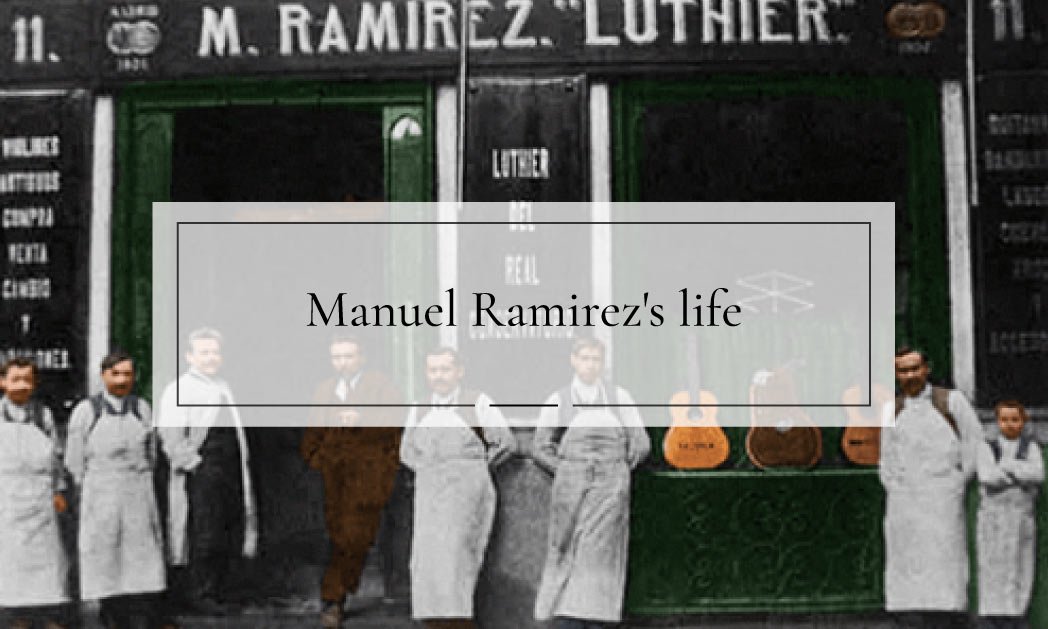Manuel Ramírez was born on May 26th, 1864 at 11pm in Alhama de Aragón, my father describes this village as a beautiful and impressive Aragón’s town; here Manuel’s father, whose name was Domingo, lived with his family for some years apparently due to the construction of a bridge, as he was the building constructor. I don’t know how long it took, but I know for sure that Manuel spent his childhood in that town from Zaragoza.
His second surname, Panell, also appears as Planet, has invited me to make a pun, so I keep with the version “Planet” as the one I like the most for reasons that will be explained if you continue reading.
Personality of Manuel Ramirez
As I am an astrologist, I couldn’t help calculating his astral chart; that confirms a lot of the few things that, from my father, I know about him.
With Jupiter crowning his midheaven, he must have had an exuberant, optimistic and daring personality, I’m sure that led him to commit not a few mistakes and also take a lot of good decisions, because the truth is that if you don’t dare you won’t do anything great in your life.
His ascendant in Aquarius, with his sun in Gemini, harmoniously with the Moon in Aquarius and with Saturn in Libra, a privileged position for this planet that defined him so much, there cannot be the slightest doubt that he was an original man, with a great personality, and mainly fair, with a marked creativity that led him to be one of the greatest and outstanding guitar constructor of all time. And almost for sure he ‘picked up’ something from the land that saw him to be born and grow up, well known for the nobility of its people.
Beginnings as a guitar maker
He mustn’t have had an easy life; it was marked by the fight and effort, by strokes of luck and also by misfortunes and disappointments, as if it were led by extreme oscillations from one experience to another. In a chart such as his, it is striking that we can observe that his prestige would spread beyond our borders, consolidating itself as time went by, even after his death, as a lasting memory in the minds and hearts of guitar lovers.
My uncle great-grandfather Manuel took his first steps in the job of guitar constructor thanks to his teacher and older brother José; he started to work with him when he was sixteen or eighteen years old. His mates where guitar constructors of the stature of Enrique García, Julián Gómez, Antonio Viudes and Rafael Casana, Manuel was the most outstanding among the group.
He was probably conscious of his talent and impatient to develop his own work, he became independent and he settled, at the beginning, in 1886 / 87 in his own home located in the Cava Baja 24, where apparently he paid thirty pesetas as the monthly rent. On June 20th, 1890 he moved to the Santa Ana Square Number 5, and later this same year to Arlabán Street 11.
When Manuel informed his brother his desire to become independent, José helped him economically, making a great effort. But what at the beginning was thought to be a move to Paris to open his guitar shop, in the end, I don’t know why Manuel stayed in Madrid, but the reason that prevented him from carrying on his original purpose must have been a powerful one, as he was a serious and, for sure, a reliable man. The fact is that this switch of destiny created an irreparable crack between the two brothers, who never spoke each other until the end of their lives.
So much so that in the workshop of my grandfather, José Ramírez II, there was a tacit prohibition on mentioning Manuel and it was my father, José Ramírez III, who gathered what information he could about Manuel and brought him back as part of the family that he was. This is the reason why there is so much imprecision about what really happened between the brothers, although his nephew José Ramírez II inherited what was in his workshop as he had no descendants.
His solitary path
Looking at the position of the stars for Manuel during this period, 1886 should have been a year when he felt optimistic, excited about his professional projects, and seeing that he had every chance to undertake his own way, it is almost for sure that he explained it to his brother and he obtained his approval. Nevertheless, the year 1887 was a hard one for him, during this year things probably started to fall through creating a bad atmosphere within the family, as the changes were not exactly the ones they expected, but there’s not a moment in which you can notice the slightest intention on Manuel to disappoint his brother.
The next year the planets in transit didn’t show any sign that things would be easier to restore their relationship, generating, if it were possible, more confusion and, probably, if there was any possibility of solving problems it was definitely frustrated.
The fact is that each of them followed his own way, and Manuel started to have a reputation as a great guitar constructor, going ahead his brother in his investigations. Among his achievements, it can be found the improvement of the “tablao guitar” designed by José, which Manuel kept on modifying until he reached the model that was considered ideal to play flamenco, and that has remained almost unchanged to the present day.
Manuel Ramírez and Antonio de Torres
But actually, the most interesting thing for Manuel was investigating and developing the classic guitar, and his main objective was to exceed the prestigious guitar constructor Torres.
The thing is that, I don’t know how, two labels of Torres fell into his hands. A little tired of having his guitars always compared with the ones of Torres, always pushing Manuel’s guitars into the background, he decided to construct two guitars in which he put together all his knowledge, and pasted his own labels on them and after that he covered the labels with Torres’ ones, gluing only the corners.
He summoned all the guitarists on a date and hour, announcing he had two guitars from Torres unknown until them and he wanted to present them. Below, I quote the words with which my father describes, in his book “Things about the Guitar”, the much-talked event. The professional guitarists and faultfinding aficionados went to see him in throngs.
The two guitars were thoroughly tested and the unanimous conclusion was reached that they were the best Torres guitars ever known. Manuel insisted on gathering more opinions so that there would be no possible retractions later. The unanimous opinion prevailed, and it was only then that he very solemnly removed the Torres labels, before the gaze of many dumbfounded eyes.
The guitar of Andrés Segovia
It can be added in his curriculum the fact that he was appointed Luthier of the Royal Conservatory of Madrid. And that he had the honor of repairing the Stradivarius of the Royal Chapel Quarter.It is quite remarkable the probably best known anecdote about him.
One day Manuel was in his Arlabán shop, speaking to José del Hierro, violin professor in the Royal Conservatory, when a young man quite extravagant entered the shop, he was covered with a cloak and leaning on a walking stick to “defend the look”*.
He intended to know if Ramírez would rent a guitar for a recital. Manuel, who as far as I know, had a high sense of humor, and he was also bad-tempered when the occasion demanded it, in his opinion, of course, found all this renting stuff quite funny, together with the appearance of the youngster, that’s why he called him “lad” and with a certain grandiloquence to give the fact more pomp, he decide to go on with the joke and he allowed him to test one of the guitars he had by hand.
It was such a wonder what they both Manuel and José del Hierro heard, that Manuel took the guitar out of the young man’s hand saying that it was not for him, and he gave him another one he had made to order for the blind man Manjón, a great guitar player of the moment and a great humanist as far as I know, but Manuel felt uneasy about him because he had tried to bargain the price, assigning flaws that it didn’t have.
The young concert guitarist was enthusiastic about that guitar and delighted them with a beautiful recital. It was such that way, that Manuel, who was impressed by the music he had listened, gave the guitar to the young man, who ended up being a still unknown Andrés Segovia.
He used this guitar in his concerts for more than twenty years. Just before his death, Segovia gave this guitar to the Metropolitan Museum of Art of New York, with the specific condition that it wouldn’t be played by anyone.I was provided with this information in a visit I made to the Met in 2001, and two years later it was given again to my nephews Enrique and Javier when they visited the aforementioned museum to see the historical instrument. This guitar must have had a high value to Segovia, as he wanted to keep forever his touch and the sound with which it filled the streaks of its wood all over so many years working together.
Death of Manuel Ramirez
The ups and downs of Manuel’s life run together with the caprices of the stars, that gave him quite a busy life, and therefore interesting and intense, especially during the period when he moved so much and he went through so many changes in his career, until he went back to the Cava Baja 24, the place where he finally settled.
Manuel Ramírez died on February 25, 1916, and he left no children. It is strange to check, so many years later, that an unexpected planet – Uranus passing over his natal Moon – put an end probably suddenly to his life, which could have been probably avoided, because, using the translated language of the astrologists, he died of a curable disease. But, of course, he taught the craft to highly talented guitar constructors such as Santos Hernández, Modesto Borreguero and Domingo Esteso; and he left behind him a chapter in the history of guitar that has marked us all with his particular print, with great anecdotes, and with an important advance in the development of such a Spanish instrument.
Written by Amalia Ramírez
August 2012
Annotations
*Quoting from Andrés Segovia himself when he recalled, in a really emotive recording, his encounter with Manuel in his Arlabán shop.


